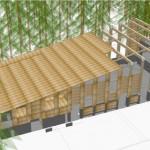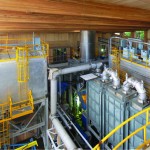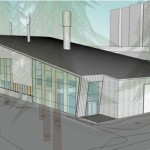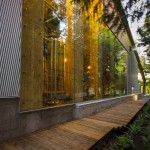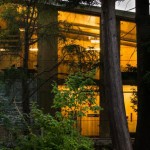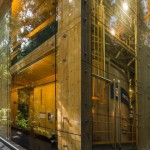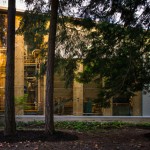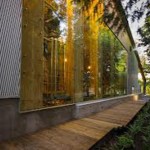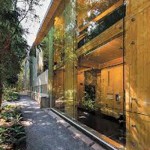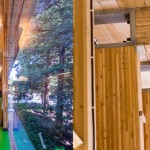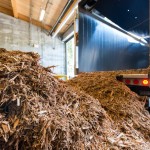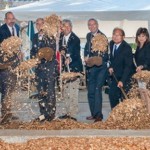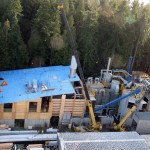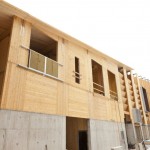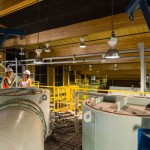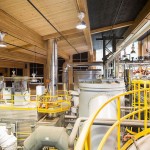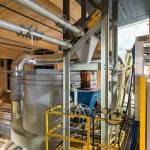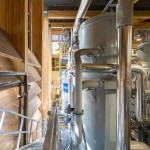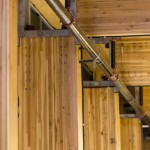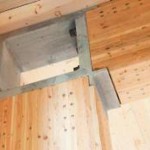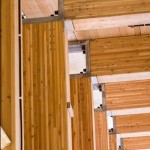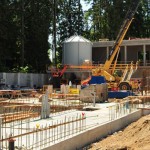Access to the Building: For safety reasons visitors must obtain prior permission to enter the Bioenergy Research & Demonstration Facility Building. For the purposes of this tour, we ask that you kindly view the building from the exterior only. The key features of the building can be easily seen by walking along its south side.
The Bioenergy Research & Demonstration Facility is a four-storey building constructed using a combination of glulam moment frames with cross-laminated timber (CLT) panels. CLT is an innovative wood-based structural system that truly showcases the low carbon, low environmental impact of BC-timber-based building technologies. CLT is being promoted as a replacement for steel or concrete in multi-storey residential and commercial buildings.
The industrial purpose of the BRDF drove the selection and design of the structural system, materials, and connections. The exposed structure of engineered wood is a combination of Douglas-Fir glulam moment frames that function as composite assemblies with Spruce-Pine-Fir CLT panels for walls, floors, and roof decking all which, are supported on a concrete foundation.
This mass timber system provided an acceptable alternative solution to the B.C. Building Code requirement for non-combustible construction, in a facility housing equipment of this type. Along with enabling faster, efficient erection through simplicity of design and limited components, CLT panels have excellent acoustic dampening properties due to their thickness and therefore reduce the sound transfer from the equipment. The panels also create a beautiful natural wood interior surface that required no additional finishes.
Moment Frames
The lateral force resisting moment frames are noteworthy. To achieve the demand requirements, a glulam moment frame system was used. Columns and Beams are 365 x 760 mm in section, with the longest beam span equal to 23 meters.
To attain the required stiffness, the corner of the moment frames were fabricated utilizing a combination of steel box plates, glued-in rods and tight-fit pins. A low viscosity grout was utilized as adhesive for this connection. Although the system is quite commonly utilized in Europe, this type of connection is rarely encountered in North America due to the current lack of design guidelines in the design codes. For this project, the structural designers utilized proprietary technical information provided directly by the manufacturer in order to correctly provision and size the connectors.
Due to the large spans of the beams in the moment frames, these were pre-cambered during manufacturing in order to control deflections after erection.
Walls and Roof
The wall and roof systems used in this building consisted of 5-ply CLT panels.
Architectural Considerations
On the exterior facades, 3-ply sound baffles were installed in order to help with equipment noise insulation. These do not serve any day lighting purposes.
The architect desired that people could be able to look inside of the building when walking around its exterior. For this reason, a large amount of glass cladding was utilized in the exterior facade that faces the neighbouring forest.
Interesting Facts
The four-story, 1,900-square-metre facility is also the first North American commercial application of cross-laminated-timber (CLT), a solid wood building system adapted to use BC lumber and manufactured in a B.C. facility.
Due to the large size of the equipment required for this bioenergy plant, most of the equipment was placed on site before the erection of the main structural members. After the equipment was placed in its final location, the structural moment frames were dropped in place, resulting in that the building was effectively built around this equipment.
Make sure to visit all of the features of the building before moving on to the next stop.
![]() Uses of Wood in the Building
Uses of Wood in the Building
Finish Tour 
